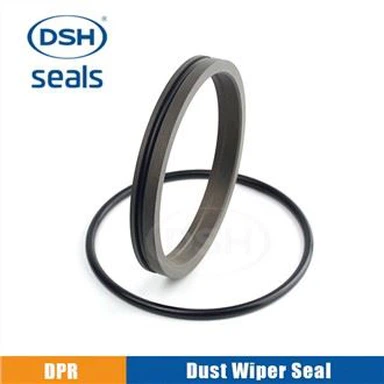Sealing Principle Of O-ring in Reciprocating Seal
May 21, 2022
In hydraulic rotating, pneumatic components and systems, reciprocating seals are a common sealing requirement. Reciprocating seals are used in power cylinder pistons and cylinder blocks, piston intervention cylinder heads, and various spool valves. The gap is formed by a cylindrical rod and a cylindrical hole, and the rod moves axially in the cylindrical hole. Axial leakage of sealing action fluid. When used as a reciprocating seal, the pre-tightening sealing effect and self-sealing effect of the O-ring are the same as those of the static seal, and due to the elastic force of the O-ring itself, it has the ability to automatically compensate after wear. However, when the liquid medium is sealed, the working situation is more complicated than that of the static seal due to the effect of the movement speed of the piston rod, the pressure and viscosity of the liquid.
When the sealing medium liquid is under pressure, the molecules of the sealing medium liquid interact with the metal surface, and the polar molecules contained in the oil will be closely and neatly arranged on the metal surface, forming a gap between the sliding surface and the seal. Strong boundary layer oil film and great adhesion to slip surfaces. The liquid film always exists between the seal and the sealing surface of the reciprocating piston rod, it also has a certain sealing effect, and the lubrication of the moving sealing surface is very important. But it is harmful to leaks. However, when the reciprocating shaft is pulled out, the liquid film on the shaft is pulled out together with the shaft. Due to the wiping action of the seal, when the reciprocating shaft is retracted, the liquid film of the sealing medium is blocked by the sealing element. outside. As the number of reciprocating strokes increases, more liquid is retained outside, and then oil droplets are formed, which is the leakage of the reciprocating sealing device. Since the viscosity of hydraulic oil decreases with the increase of temperature, the thickness of the oil film decreases accordingly, so when the hydraulic equipment starts at low temperature, the leakage at the beginning of the movement is relatively large, and the temperature rises due to various losses during the movement process. , the leakage has a gradually decreasing trend.
O-rings are used as seals with compact structure and small size, which can reduce the overall seal. Mainly used in:
1) In low-pressure hydraulic components, it is generally limited to short strokes and medium pressures of about 10MPa.
2) In small diameter, short stroke and medium pressure hydraulic spool valves.
3) In the pneumatic slide valve and pneumatic cylinder.
4) As an elastomer in a combined reciprocating seal.







